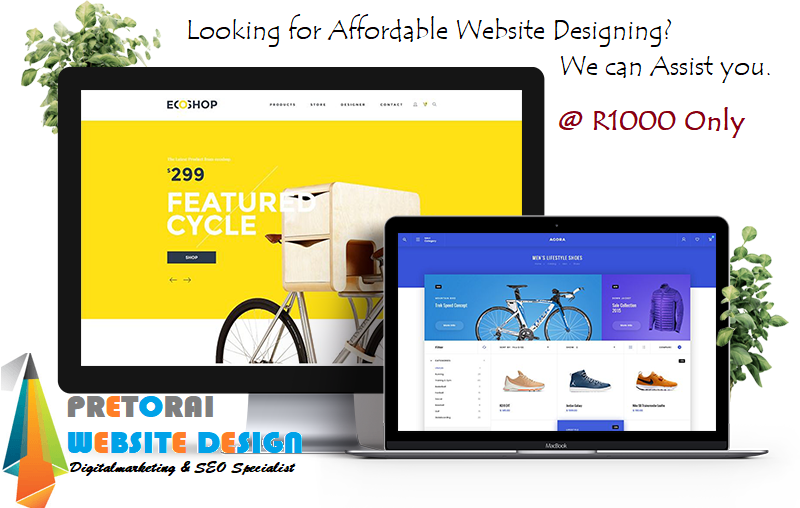Checking Out Ingenious Trends in Web Design Pretoria for 2024
Checking Out Ingenious Trends in Web Design Pretoria for 2024
Blog Article
Best Practices for Developing User-Friendly Website Design
In the ever-evolving landscape of website design, developing an easy to use user interface is paramount for engaging audiences and driving conversions. Trick techniques such as streamlining navigation, maximizing for mobile phones, and improving packing rate play a crucial function in this procedure. Additionally, the importance of constant style aspects and focusing on accessibility can not be overemphasized. As we check out these foundational concepts, it becomes clear that reliable user experience layout not only fulfills customer expectations but likewise sets the stage for deeper engagement. Finding the nuances of each practice can lead to considerable enhancements in general internet performance.
Simplify Navigation
A streamlined navigating system is vital for enhancing customer experience on any kind of site. Reliable navigating permits users to find the info they seek promptly and easily, thereby lowering frustration and boosting the possibility of interaction. A clear design that classifies material rationally is extremely important; individuals need to intuitively comprehend where to click for specific info.
Using a straightforward top-level navigating bar, complemented by drop-down menus for subcategories, aids in keeping an organized framework. It is crucial to restrict the number of primary navigation links to avoid overwhelming individuals; usually, 5 to seven alternatives are ideal. In addition, using descriptive tags improves quality, enabling customers to discern the content of each section at a glance.
Incorporating a search function additionally improves the navigation experience, specifically for content-rich websites. This feature empowers customers to bypass typical navigation courses when looking for details details. Additionally, constant design components throughout all web pages strengthen knowledge, permitting customers to navigate with self-confidence.
Maximize for Mobile

First of all, embrace a receptive style technique that immediately changes the layout and web content based on the display size. This adaptability ensures that individuals have a constant experience across gadgets. Next, prioritize touch-friendly user interfaces by ensuring switches and web links are easily clickable, reducing the need for zooming.
Furthermore, think about the importance of succinct material discussion. Mobile individuals frequently seek fast info, so using methods like collapsible food selections or accordions can boost usability without frustrating the user. In addition, make certain that fonts are clear, and photo dimensions are optimized for faster loading.
Last but not least, test your site on different mobile phones and running systems to recognize possible problems. By dealing with these aspects, you will create an intuitive mobile experience that keeps customers engaged and urges them to discover your offerings further - Web Design Pretoria. Focusing on mobile optimization is important for achieving a straightforward website design in an increasingly mobile-centric world
Enhance Loading Speed
Loading speed is an important try these out variable that can considerably influence customer satisfaction and interaction on a web site. Researches indicate that individuals expect pages to load in 2 seconds or less; yet limit, the chance of desertion enhances drastically. Therefore, enhancing filling rate is crucial for maintaining site visitors and boosting total site efficiency.
To boost packing rate, numerous best methods ought to be applied. Optimize pictures by pressing them without giving up high quality, which can significantly decrease data dimensions. Additionally, leverage web browser caching to save duplicates of documents in your area, enabling faster tons times for returning visitors. Minifying CSS, JavaScript, and HTML documents can also aid by removing unneeded characters and rooms, thus lowering the amount of code that needs to be refined.

Use Consistent Design Elements
Establishing a natural aesthetic identity is critical for enhancing user experience on an internet site. Regular design components, consisting of color plans, typography, switches, and format structures, create a unified look that assists individuals browse easily. When individuals run into familiar patterns and styles, their her latest blog cognitive tons is decreased, permitting them to focus on material instead of decoding varying design elements.
Making use of a standard color combination strengthens brand recognition and fosters a psychological connection with individuals. Maintaining consistent typography-- such as font designs, sizes, and weights-- makes sure readability and great post to read contributes to a refined appearance. In addition, uniform button styles and interactive elements direct users intuitively through the site, boosting usability.
Additionally, a cohesive layout assists develop an arranged circulation of information, making it less complicated for customers to situate and digest web content. Each page must reflect the very same style principles to avoid complication and disorientation.
Prioritize Availability
A natural aesthetic identity not only enhances navigating but additionally establishes the stage for focusing on access in website design. Accessibility guarantees that all users, consisting of those with disabilities, can navigate and interact with a web site successfully. To achieve this, web developers should comply with developed guidelines, such as the Web Content Access Standards (WCAG)
Executing functions like alt text for pictures, keyboard navigability, and ideal color comparison can considerably enhance the user experience for people with visual, auditory, or cognitive problems. It is critical to utilize semantic HTML to structure content rationally, permitting assistive technologies to share and interpret information properly to users.
Additionally, giving multiple ways of involvement-- such as message alternatives for audio and visual content-- can cater to varied user needs. Routine usability testing with individuals who have handicaps can discover potential obstacles that might not be immediately obvious during the style stage.
Ultimately, prioritizing availability not just adheres to lawful criteria yet likewise broadens the potential audience, cultivates inclusivity, and boosts total website use (Web Design Pretoria). By embedding ease of access into the layout procedure, developers can produce a much more equitable electronic landscape for everybody
Conclusion

As we discover these foundational principles, it comes to be clear that reliable customer experience layout not only fulfills customer expectations but likewise sets the stage for deeper interaction. Mobile users typically look for fast details, so using techniques like collapsible menus or accordions can enhance usability without overwhelming the customer. When customers come across familiar patterns and designs, their cognitive tons is reduced, enabling them to concentrate on content rather than understanding varying style facets.
In summary, applying ideal methods for straightforward internet design dramatically improves the overall individual experience. Sticking to these standards cultivates a positive connection in between customers and electronic platforms, inevitably advertising user contentment and retention.
Report this page